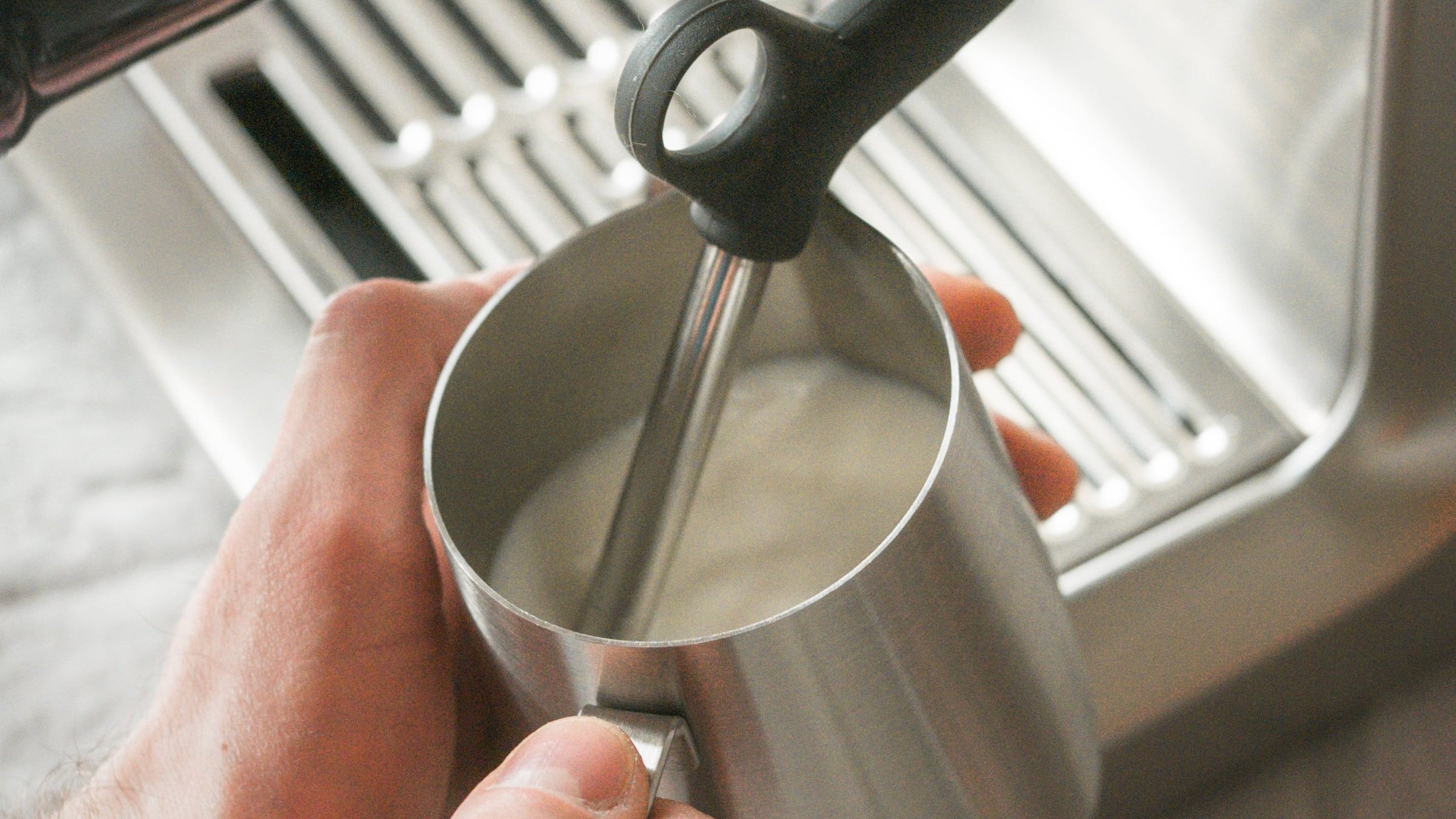Steaming milk at home may seem challenging at first, but with the right approach, it can be a fun and rewarding part of crafting your favorite coffee beverages. Whether you're making a smooth latte, a frothy cappuccino, or a bold macchiato, mastering steamed milk is essential. The Breville Barista Express is an ideal tool for achieving café-quality steamed milk right in your kitchen. This guide will take you through the process step by step, offering practical advice to help you get started. Discover the advanced features and performance of this machine in our Breville Dual Boiler BES920XL review
Why Steamed Milk is Crucial for Coffee
Steamed milk is more than just foam; it plays a transformative role in your coffee. The steaming process creates microfoam—tiny bubbles that contribute to a smooth, velvety texture. Properly steamed milk not only enhances the flavor but also balances the intensity of the espresso with a rich, creamy consistency. This combination of texture and flavor elevates your entire coffee experience. Learn about the ease of use and innovation in our Breville Barista Touch Impress review
Getting Your Breville Barista Express Ready
The Breville Barista Express, also known as the Sage Barista Express in the UK, is a top choice for home baristas. Its efficient steam wand makes it easier to achieve professional-level results. With some practice, you can steam milk like a pro and enjoy coffeehouse-quality drinks at home. Compare these two popular models in our Breville Barista Express Impress vs Pro review
What You’ll Need for Steaming Milk
Before you begin, make sure you have the following items ready:
- Breville Barista Express with steam wand
- Cold milk (whole milk is best for creamy foam, but barista-style oat or almond milk also works well)
- Stainless steel milk jug for better temperature control
- Optional thermometer to monitor milk temperature

Step 1: Preparing Your Machine
Start by ensuring that your Breville Barista Express is fully heated. The steam function light will indicate when the machine is ready, but allowing it to warm up for another minute ensures it reaches the ideal temperature. Find out which machine suits you better in our Breville Barista Pro vs Express review
Next, purge the steam wand by turning the steam dial for a few seconds. This removes any water that may have condensed in the wand, ensuring that only steam is emitted when you start steaming. Explore the key differences between these premium machines in our Breville Oracle vs Oracle Touch review
Step 2: Preparing the Milk
Fill your milk jug about one-third full with cold milk. Cold milk gives you more time to achieve the desired texture before it heats up. Whole milk is recommended for its creamy consistency, but barista-grade plant-based milks like oat or almond also froth well.
Step 3: Positioning the Steam Wand
Proper wand placement is key to getting the best results. Place the tip just below the milk's surface, angled at a 15-20 degree tilt. This angle encourages a whirlpool effect, which helps break down large bubbles into smooth, velvety microfoam.
Slightly tilt the jug to create a vortex, which helps distribute the heat evenly and integrates the foam more smoothly.
Step 4: Steaming the Milk
Turn the steam knob and listen for a gentle hissing sound, which indicates air is being incorporated into the milk. This is the “stretching” phase, where air is introduced without splashing.
After about 5-10 seconds, lower the jug to submerge the wand deeper into the milk. This initiates the "texturing" phase, where the milk heats up and the foam is incorporated. The milk should swirl continuously, creating glossy, silky microfoam.
The entire process should take around 20-30 seconds. If you're using a thermometer, aim for 150°F (65°C). If you don’t have one, stop when the jug feels too hot to hold for more than a few seconds.
Step 5: Cleaning the Wand and Final Touches
Once your milk has reached the perfect texture and temperature, turn off the steam and wipe the wand with a damp cloth to remove any milk residue. Purge the wand again to prevent buildup.
Tap the jug lightly on the counter to eliminate any large bubbles and swirl the milk to ensure a consistent texture. A shiny, smooth surface indicates your microfoam is ready.
Step 6: Pouring Milk into Your Coffee
The way you pour the milk can enhance both the flavor and appearance of your drink. Start with a slow pour, keeping the jug close to the cup to mix the milk with the espresso. As you near the top, raise the jug and pour faster to settle the foam. With practice, you can even experiment with latte art to elevate your creations.
Common Issues and How to Fix Them
Steaming milk is a skill that requires a bit of trial and error. Here are some common issues and solutions:
- Milk not frothing well: Make sure you're using cold milk and that the wand is positioned just below the surface to effectively incorporate air.
- Large bubbles in the foam: Avoid introducing too much air by keeping the wand tip near the milk's surface without splashing.
- Overheated milk: Use a thermometer to monitor the temperature or stop steaming when the jug becomes too hot to touch comfortably.

Final Thoughts
Perfecting the art of steaming milk with the Breville Barista Express takes time and practice, but it’s a skill that can be mastered with attention to detail. By focusing on air incorporation and temperature control, you’ll be able to consistently create smooth, velvety microfoam that makes café-quality beverages at home. Enjoy experimenting with your Breville and crafting the perfect cup of coffee! Happy steaming!
